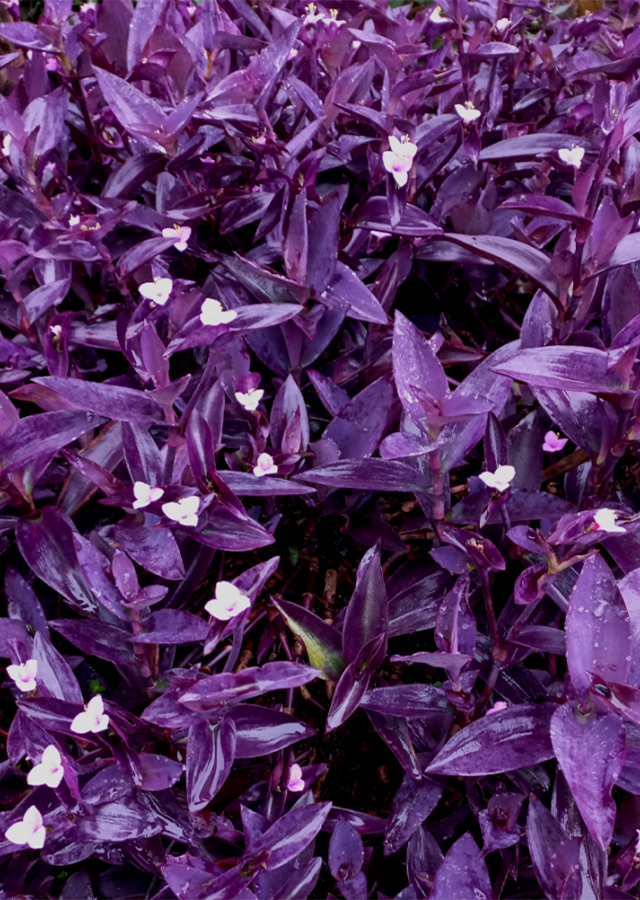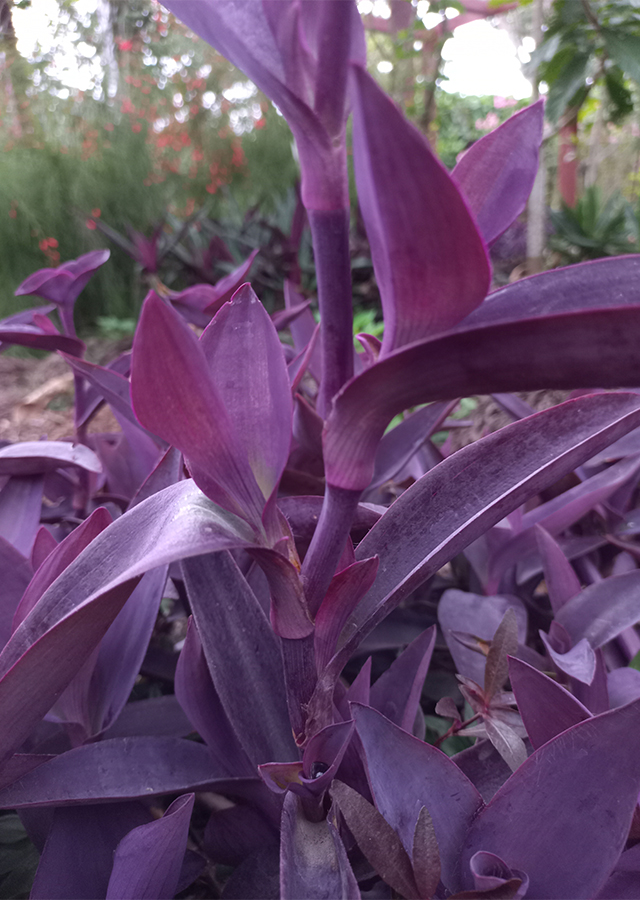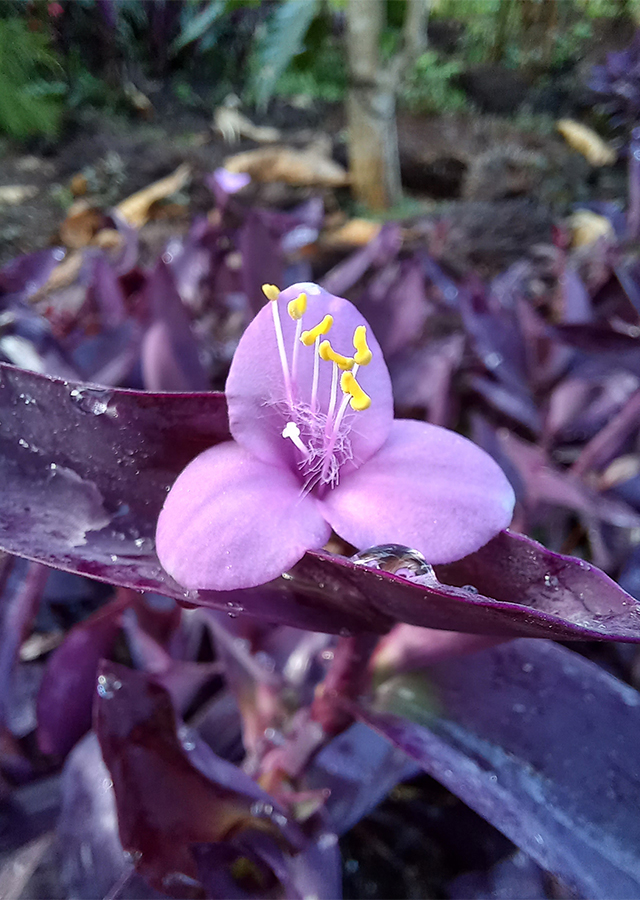Traditional Herbs from Tradescantia pallida
stimulates blood circulation
- Prepare enough purple heart leaves, wash them thoroughly.
- Boil until boiling.
- Let it warm/cool.
- Strain and drink to improve blood circulation.
What is Tradescantia pallida Looks like??



Parts of Tradescantia pallida that could be used
- Leaves
- All Parts of the Plant
Tradescantia pallida Distribution
Purple heart is a plant that originates from Mexico and is now widely commercialized as an ornamental plant and used as ground cover in tropical and subtropical regions including North America, Central America, South America, the West Indies, South Africa, the Canary Islands, Madeira, and Myanmar. . This plant is one of the ornamental plants that can be kept indoors, because it is considered effective for improving air quality by cleaning and filtering volatile pollutants from indoor air. Apart from that, the purple heart plant also has good health benefits. Traditionally, purple liver is believed to improve blood circulation and act as an anti-inflammatory, antitoxic and antioxidant supplement. In Malaysia, the Ayta people of Porac Pampanga use this plant to treat eye pain.Agroecology of Tradescantia pallida
Purple heart is a species that can be found growing under disturbed forests, along roadsides, riverine areas and coastal forests. Grows in tropical and subtropical areas with warm temperatures. Prefers a position in full sun to shade (partially shaded), with average annual rainfall ranging from 800-3,500 mm. In locations exposed to sunlight, the leaves will have a more striking color. Purple heart does not grow well in locations with air temperatures below 8-10 °C. Heat tolerant, but damaged by frost and winter conditions. This plant is able to grow and adapt in various types of soil (loam, sandy loam, and lime), but optimal growth occurs in moist soil with a pH ranging from 5 to 7.8, and is well-drained, but tolerant of drought.
Morphology of Tradescantia pallida
- Fibrous roots.
- Stems are round, succulent, fleshy, dark purple, erect at first, then crawl on the ground.
- Leaves are clenched midribs, ciliated, leaf blade oval, leaf tip pointed, upper surface The leaves are deep dark purple while the underside of the leaves is bright purple which shades towards pink, the base of the leaf wraps around and encircles the stem, covered in fine, soft hairs. The leaves located at the top are slightly smaller.
- Flowers in clusters small dense cymose with 2 or 3 bracts umbellate, pilose towards the apex. The petals are 3 oval and pink to rose purple, the stamens are 6, with 3 epipetal filaments and 3 attached to the edge. corolla, glabrous or variably pubescent. Inflorescences are terminal and in the axils of the upper leaves Open only in the morning.
- The fruit is a glabrous capsule, measuring 3.5 mm.
- The seeds are very small (2.5-3 mm).
Cultivation of Tradescantia pallida
Propagation is carried out vegetatively (stem cuttings and root fragments).
Tradescantia pallida, more details :
Chemical Content of Tradescantia pallidaAnthocyanins, flavonoids, tannins, steroids.
Benefits of Tradescantia pallida
Treats eye pain, improves blood circulation. Has activity as an antioxidant, antibacterial, anti-inflammatory and antitoxic.
Simplisia of Tradescantia pallida
- Prepare the purple heart leaves, wash them thoroughly with running water.
- Cut the leaves into small pieces then dry the leaves in the shade, not exposed to direct sunlight for 4 days.
- After drying, grind the leaves until they become powder.
- Store in a closed and airtight place.
Another Facts for Tradescantia pallida :
Synonym of Tradescantia pallidaTradescantia striata Mottet, Tradescantia velutina L.Linden, Setcreasea jaumavensis Matuda
Habitus of Tradescantia pallida
Herb. Annual herb, plant height ranges from 30-45 cm
Habitat of Tradescantia pallida
- Riverside", "Forest", "Coastal", "Roadside", "Bush Area", "Land
No comments:
Post a Comment